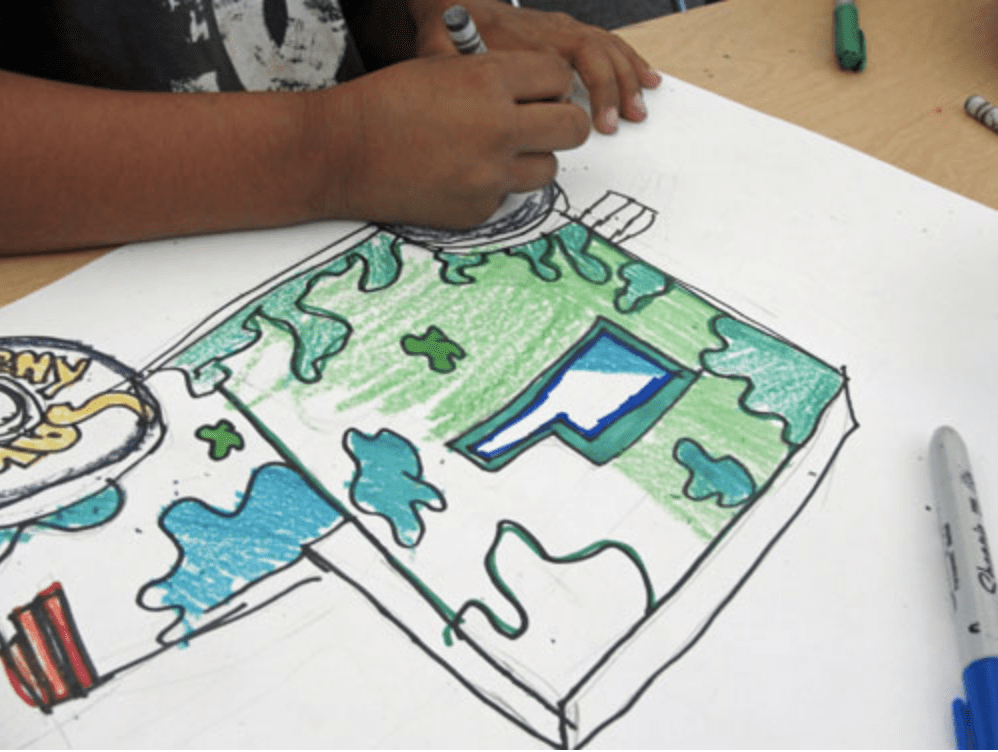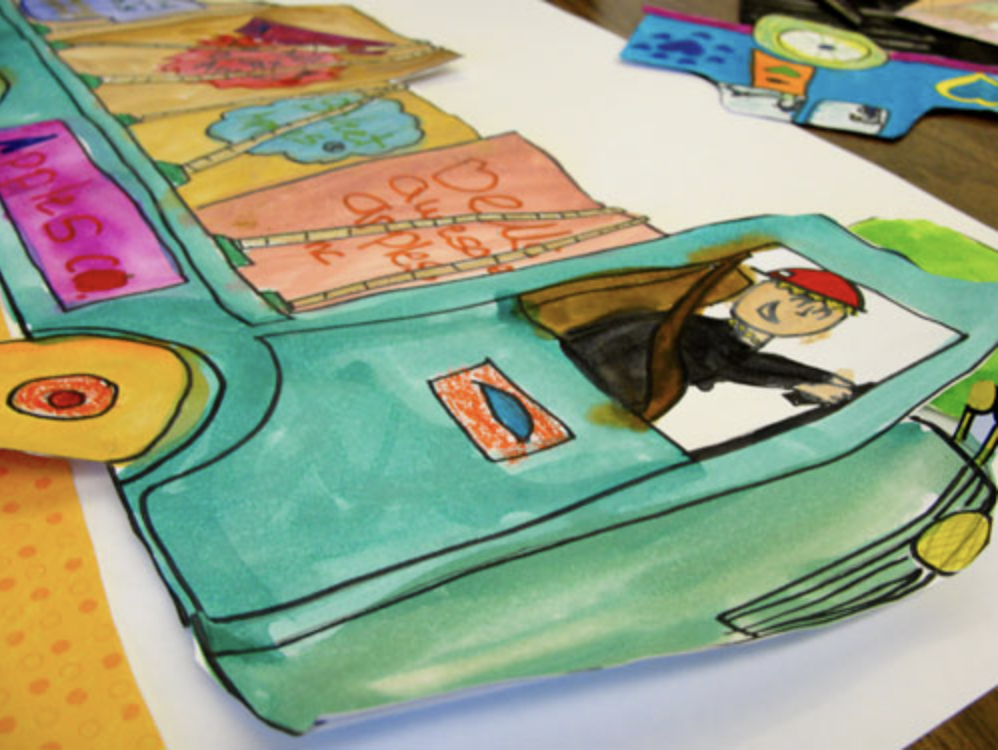
One of the most common management dilemmas in the art room is how to deal with students who arrive in the art room after missing one or more lessons.
I admit to silently groaning after passing out last week’s art lesson and realize that four students don’t have a project. We all know what that means. We must teach the lesson again.
Or do we?
It really depends on the lesson.
Many of my lessons for K-3 are designed to be completed in two class sessions. So if a child misses one of class, they can never be too far behind. Often times, I’ll have some sort of handout that I can give to the students to help them catch up. If the child has an aid, then I leave it up to the aid to take over. I say this because the students who are pulled out for various reasons are the students who usually have to miss art class. This makes me sad, but that’s another post.
If there are more than three children who have missed one part of the lesson, I will group these children together at one table, even if they have a regular seating arrangement.
When I finish giving the instructions to the rest of the class, I will sit with this small group and offer a very quick, abbreviated version of the first part of the lesson. I can’t tell you why, but these children almost always catch up to the rest of the class. Perhaps it’s peer pressure or just simple concentration.
Upper Grades
For my older students (ages 9-12, grades 4-6), my lessons can extend over 3-4 class sessions. It’s not that the lessons are more challenging, but the classes are larger (29-32 kids) and the time frame is the same as for the younger grades (45 minutes).
If a child misses any of the sessions, my goal is to have him complete the first step. This is often the drawing or conceptual stage and after that, the child can catch up accordingly. Many times and especially with older children, a friend will often help the child catch up.
PREPPING FOR DIFFERENT LESSON STAGES

I’m going to use my Truck Collage lesson for this example. It requires 3 different steps and at least three classes.
The first stage is drawing the truck
This part of the lesson requires drawing paper, handouts and markers. These supplies are easy to generate any time, so if a child walks in on step two/day two, you can easily grab some paper and drawing supplies.

The second step is coloring using markers, paints, crayons or colored pencils.
Because this is a choice-based project, the prep can be challenging unless children are comfortable retrieving their own supplies. This means that part of your classroom plan needs to include the process for selecting and putting back art supplies from cupboards, etc.
If a child walks in on the third day, having completed some of the drawing, he can easily grab either drawing supplies or coloring supplies. The trick is to set up a table in the back with the supplies he will use.
Limiting the color choices can make it easier to catch up.

The third step is assembling the collage.
If a child arrives on day three after missing day one and two, I will give him a nice sheet of paper and allow him to use the art supplies in any way he wishes. At this point, I will not teach the lesson.
TIPS FOR KEEPING KIDS ON TRACK
- Have a specific goal for the class each art session. If you are doing a multi-step lesson, have a definitive starting and stopping point for that day’s task. If a child finishes early, send him to the free-choice area. This way, on day 2 of the project, you will likely have all the kids staring at the same point.
- If a child misses a class, set him up at a table by himself with a handout and the supplies. If you can’t give him individualized attention, don’t fret too much. Teach to the class, not to an individual (at least on most days). If a child is left alone to complete a step, they are sometimes motivated to get back to the group. If they struggle, be there to help, but let him know that it will be after you get everyone else settled.
- Try to remember that children can’t control whether or not they come to school or miss a class. It’s not their fault and they shouldn’t be punished for it. I try to remember this because although it is frustrating, allowing frustration to take over benefits no one.
- Try to do as many single-day lessons as possible! If you have 50- minutes or more for a class, there are tons of single-lesson ideas you can do. If you have 45-minutes or less, it becomes slightly more challenging. Here is list of 45-minute lessons to look through.
Here’s what one art teacher said about their missed-art strategy:
I have an open door policy for the mornings before school. Some children may come after school if I’m there. This really helps the conscientious ones catch up. Unfortunately, there are always those students who forget to come in and they are the ones with a drawer full of unfinished projects. The students are instructed to check the drawer for unfinished work before they do any early finisher/free drawing.
Also, at least once a semester we have a catch-up day and work on any unfinished art. Lastly, students are generally motivated to complete a project when they see their classmates’ art hanging in the hallway and theirs is MIA. – Elizabeth














My school now has “studio time” for the primary specialists (art, music, library, PE); it is what specialists do instead of yard-duty. This is a 30 minute time slot right after the students’ 30-minute lunch so children can choose to go play outside or get a studio-pass for one of the proposed activities of the day; I have a maximum of 10 students per studio period.
When a child is absent, I coordinate with him/her and his/her homeroom teacher so that they can come and make-up for the missed class. Most of them are happy to come to the art room (thank you DSS).